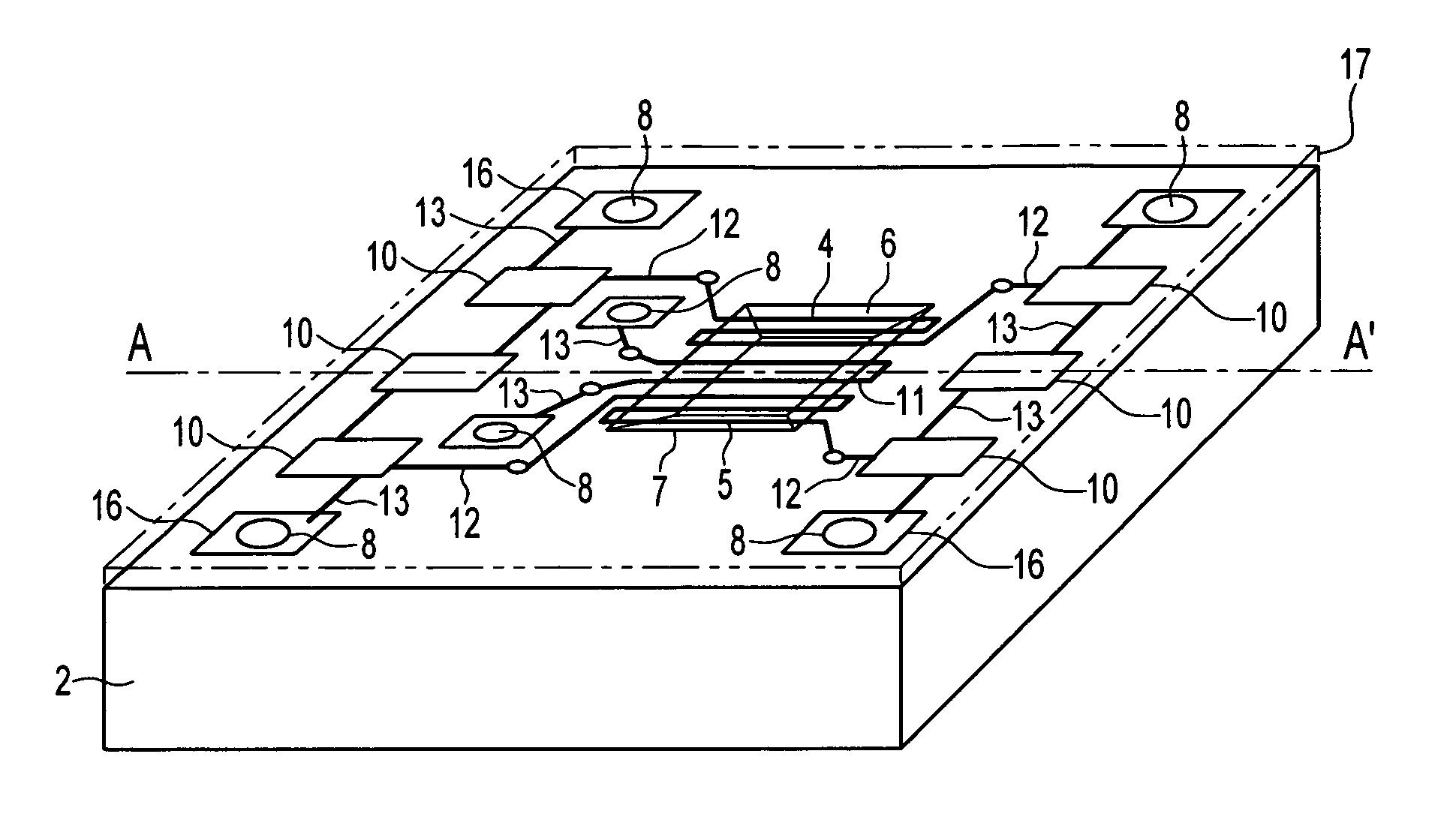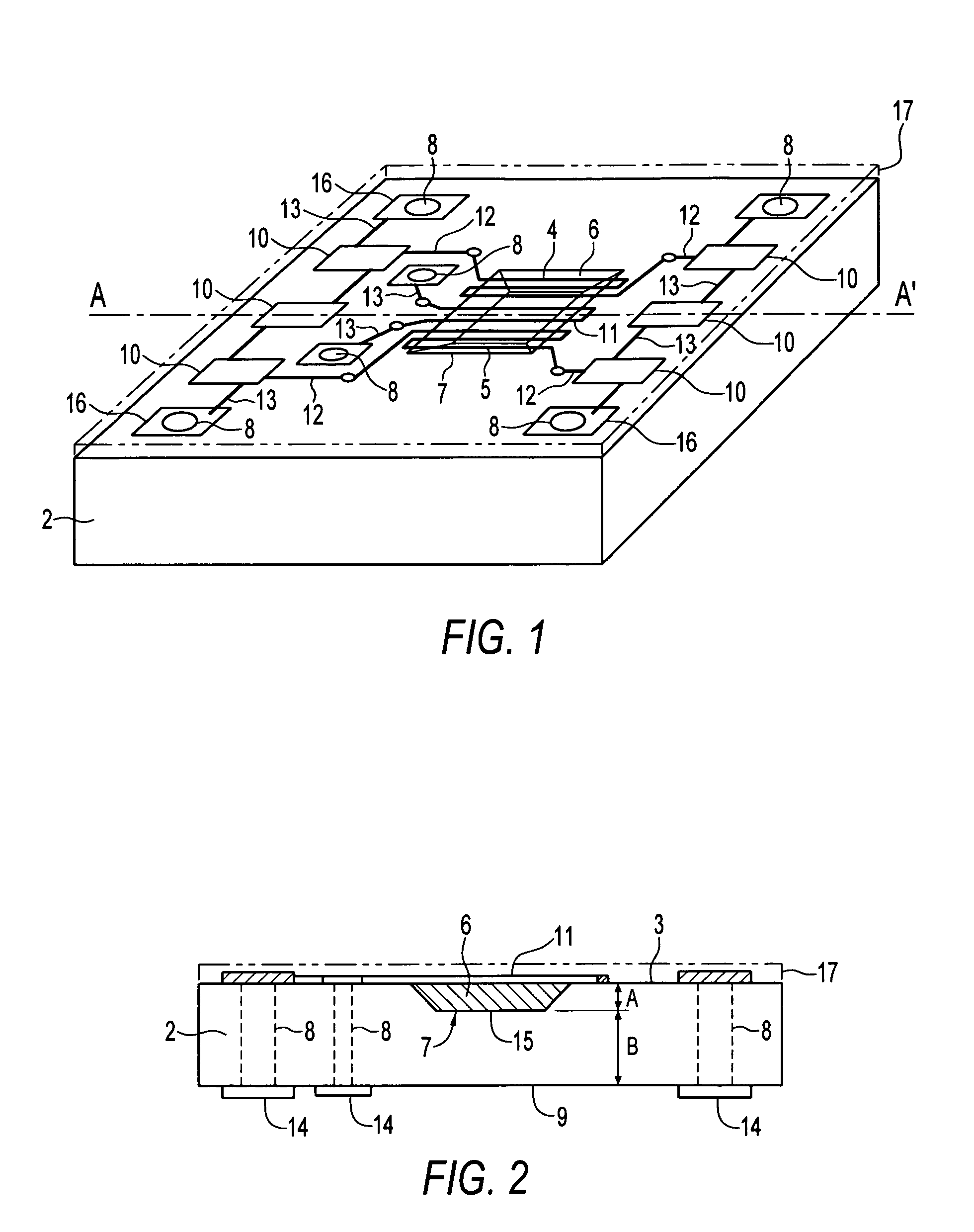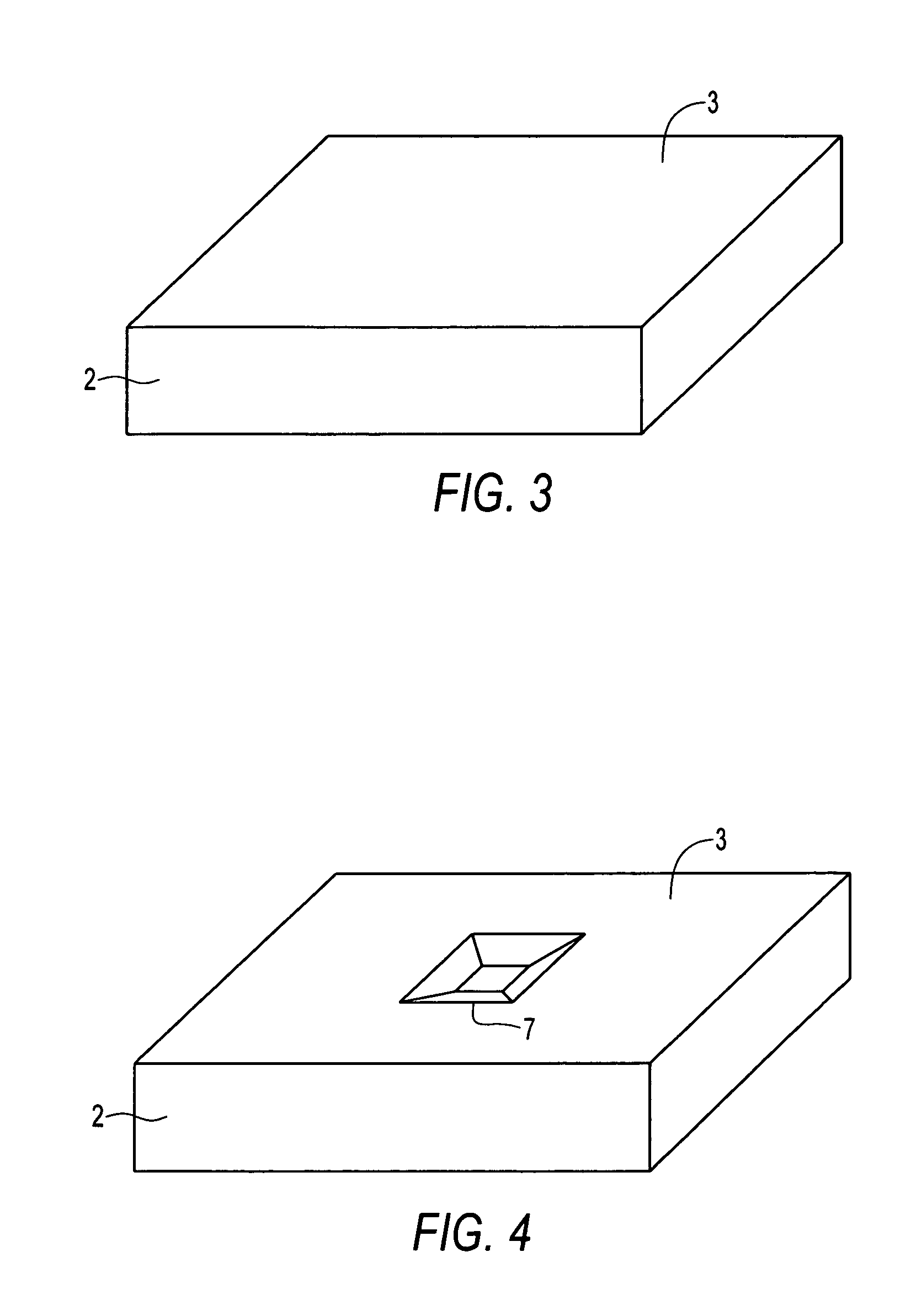Thermal fluid flow sensor and method of forming same technical field
a technology of temperature sensing elements and sensors, applied in the field of sensors, can solve the problems of affecting the reliability and operation life of the sensors, affecting the reliability of the sensors, and the type of sensors is expensive to make and integrate into existing sensor applications, so as to reduce the path resistance of the temperature sensing elements and the signal conditioning circuitry. , the effect of increasing the signal to noise ratio
- Summary
- Abstract
- Description
- Claims
- Application Information
AI Technical Summary
Benefits of technology
Problems solved by technology
Method used
Image
Examples
Embodiment Construction
[0033]The particular values and configurations discussed in these non-limiting examples can be varied and are cited merely to illustrate at least one embodiment of the present invention and are not intended to limit the scope of the invention.
[0034]Referring the accompanying drawings, FIG. 1 illustrates a perspective view taken from above the fluid flow sensor according to one embodiment and FIG. 2 illustrates a partial cross-sectional view taken along line A-A′ of FIG. 1. The fluid flow sensor according to one embodiment generally consists of a thermal liquid flow sensor 1 comprising an integrated circuit substrate 2 having a surface 3 which, in the illustrative embodiment, is top surface 3, and a region of low thermal conductivity material 6 carried on the integrated circuit substrate at surface 3. The sensor 1 has at least one pair of temperature downstream / upstream sensing elements 4, 5 disposed on the low thermal conductivity region 6, an optional heating element 11, also dispo...
PUM
 Login to View More
Login to View More Abstract
Description
Claims
Application Information
 Login to View More
Login to View More - R&D
- Intellectual Property
- Life Sciences
- Materials
- Tech Scout
- Unparalleled Data Quality
- Higher Quality Content
- 60% Fewer Hallucinations
Browse by: Latest US Patents, China's latest patents, Technical Efficacy Thesaurus, Application Domain, Technology Topic, Popular Technical Reports.
© 2025 PatSnap. All rights reserved.Legal|Privacy policy|Modern Slavery Act Transparency Statement|Sitemap|About US| Contact US: help@patsnap.com



